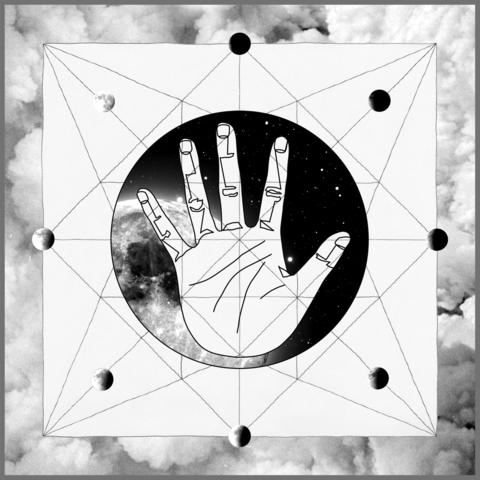
His name is Chen Ruihe in Chinese, but everyone calls him Sting. Growing up in Taipei, Sting had a very ordinary family background. In college he studied Fine Art and Visual Communication, and today he works as an advertising art director and a freelance illustrator.
他的中文名字叫陳瑞和,但是大家都叫他Sting。Sting成長於臺北壹個普通傳統的家庭。大學在校時期學習純藝術和視覺傳達的他,現在是壹名廣告藝術指導和自由插畫師。

When Sting draws, he likes to think that his hand is actually holding a surgical scalpel, and that he is like a doctor performing surgery, suturing creative ideas together. He says that in his work there are many secrets and layers of hidden meanings. Sting laughingly describes his illustration work as being “neurotic, claustrophobic, and schizophrenic”. At times, there is even an underlying sense of catabythismomania, or the impulsive desire to drown oneself. This feeling is perhaps most evident in his eye-catching new series of drawings Our common pre-existence exists in the ocean, which illustrates a dense world of underwater marine organisms.
Sting在作畫時,樂於想象自己是位醫生,雙手握著手術刀,將藝術創意縫合在壹起。他說,他的作品中藏匿著諸多秘密和隱秘含意。他笑言自己的作品是具有“神經質、幽閉空間恐懼癥、精神分裂癥”的。間或,也有自溺狂癥,抑或是壹種將自己溺斃的沖動欲望深藏作品之中。這種意味在他的新作品系列《Our common pre-existence exists in the ocean》中或許最為強烈,這個引人註目的繪畫系列描繪了壹個海洋生物群體的密集世界。

The idea for this series of drawings came after he took a body sketch class. Sting quickly became fascinated with the beauty and textures of anatomical forms. He started work on the drawings, by first collecting hundreds of pictures of whales as reference materials. He then achieved the texture of the skin with many repeated hand-drawn strokes. During the process of making this work, he soon came to the realization that marine creatures also had very real and mysterious souls. After all, as he says, we share a common pre-existence in the ocean. In our interview below with Sting, he tells us more about his own personal journey as an artist.
這個繪畫系列的創意形成於他所修的人體素描課。Sting迅速著迷於解剖體的肌理和美妙。為了新繪畫系列的創作,他收集上百張鯨魚的照片作為參考材料,繼而通過周而復始的手繪將這些皮膚肌理於紙上實現。在這些作品的創作過程中,他很快意識到海洋生物同樣也是非常真實和神秘的個體。他說,歸根結底,我們都有著共同的海洋先祖。以下采訪中,Sting將告訴我們更多關於他身為藝術家的個人旅程。

Neocha: What do you enjoy most about illustration?
Sting: Just the act of creating something and then trying to comprehend what I’d made. I really enjoy the process of creating things purely from scratch, starting out with an intangible idea and then making it into an actual physical piece of work. During this whole process, because I am constantly thinking about and analyzing the work – both by itself and in the greater context of things, my understanding of what I’m making is always evolving. For me, it’s not about having a right or wrong answer. It’s about forcing myself to think more critically.
Neocha: 妳覺得插畫令妳最享受的是什麽?
Sting: 創造與瞭解。創作是個從無到有的過程,把無形的念頭與思緒轉換成作品,我非常享受在這樣的狀態之中。同時,在這過程中,因為不斷的思考,對於自身與周邊的事物,都會有新的體悟與瞭解,無關乎對錯與答案,對我而言,只是一個強迫思考的療程。

Neocha: Tell us about your creative process. How do you normally come up with a new piece of work?
Sting: My creative ideas very rarely ever come to me all of a sudden. Most of them brew inside me for a very long time, until I feel the moment is right for me to start drawing. I tend to work on a few illustrations at a time. If one drawing doesn’t feel right to me, I’ll take a break from it and work on a different one. Maybe some time will pass and then I’ll come back to it later and look at it from a fresh perspective. Maybe I will have some new ideas, and then continue working on it. This happens over and over again until the work is finished.
Neocha: 聊聊妳的創作過程吧!壹個新作品都是怎麽來的?
Sting: 我的創作來源很少是靈光乍現般的突然出現。大部份都是藏在內心,醞釀很久的記憶,直到某個對的時間我才開始動筆。創作過程我都是同時進行多張作品。感覺不對便停下來換下一張,或許過段時間重新看看,又有些新想法,便再繼續。如此週而復始,直到全部作品完成。

Neocha: What do you do, or where do you go, to get inspiration?
Sting: I actually get a lot of my inspiration from going to music festivals. Recently over the years, I’ve been to a lot of local and international ones; for example, up in the mountains for Japan’s Fuji Rock, or next to sea at Hong Kong’s Clockenflap or at Spain’s Primavera Sound, or outdoors in the city at Japan’s Summer Sonic Japan and Taipei’s Formoz Festival. That is, when I’m watching a band play live on stage, drinking a beer, smoking a cigarette, I feel completely free to do as I like. After dancing, cheering, losing myself in the crowd, if I’m really tired, I can just lie on the grass, bask in the sun, and chat with my friends. Inspiration comes to me quite naturally in those kinds of moments.
Neocha: 都會去哪裏獲取靈感?做什麽能獲得靈感?
Sting: 音樂祭是我靈感最大的來源。這幾年參加了許多國內外的活動,例如在山林裡的日本Fuji Rock,在海邊的香港Clockenflap與西班牙的Primavera Sound,在都會裡的日本Summer Sonic與台北的野台開唱Formoz Festival…… 就是邊聽喜歡樂團的音樂,一邊喝點酒,抽些煙,無拘無束,還不時大叫與堆擠衝撞,累了就躺在草地曬太陽聊天。靈感在那時候就會不斷地湧現催促著我。


Neocha: Was there a decisive moment in your life when you said to yourself “this is what I am going to do”? How did you discover your own talent?
Sting: When I was three and was in kindergarten – when I still hadn’t learned how to ride a bicycle yet, I realized that I was actually really good at drawing. No one had ever told me this, but I just knew this about myself. And not only that, I also believed from early on that this would be something that would be a part of me for the rest of my life.
Neocha: 生命中有沒有壹個時刻是妳對自己說:“這就是我要追求的事?”妳怎麽發現自己這種創造性的自我表達和才能?
Sting: 在我3歲唸幼稚園時、當我還未學會騎腳踏車時,就明瞭自己擅長繪畫。沒有人跟我說過,但就是自己知道,而也相信這會陪著我一生。

Website: stingchen-art.com
Behance: ~/stingchen-art
Instagram: @stingchen_fittingroom
Contributor: Leon Yan



























































































































































